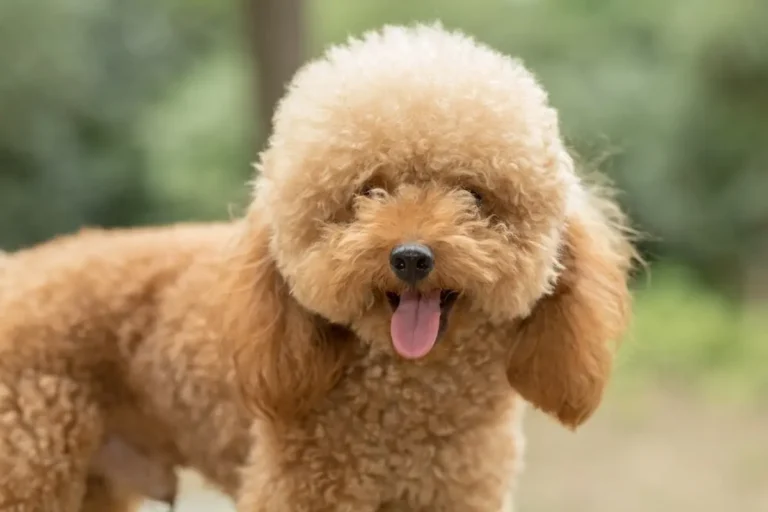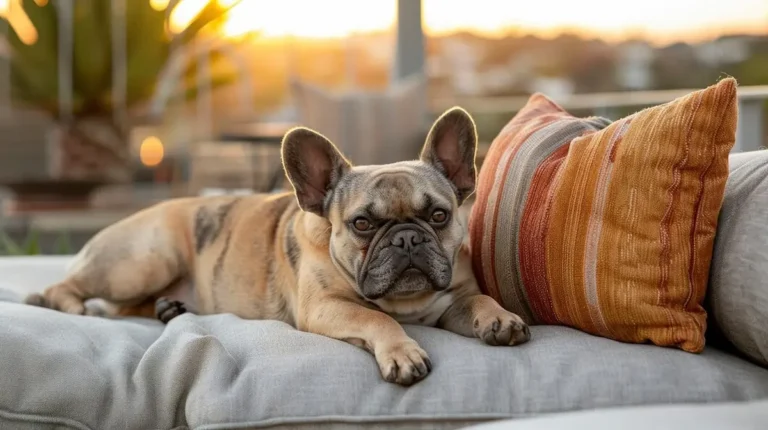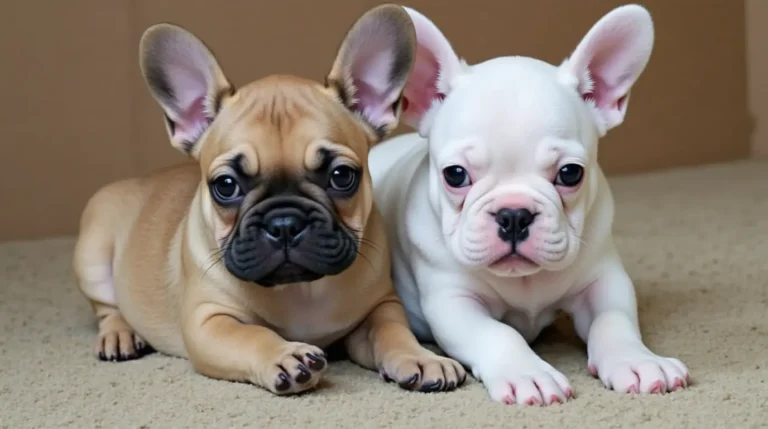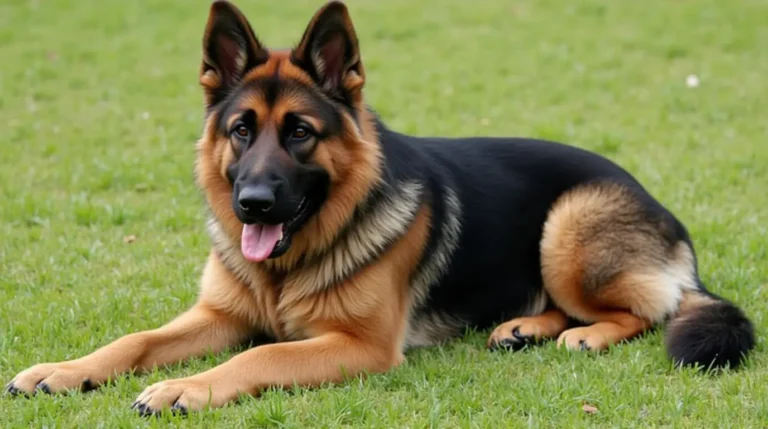The Ultimate Guide to Hypoallergenic Dogs: What You Need to Know About Low-Allergen Breeds
Introduction
If you’re one of the millions of people who suffer from allergies but dream of bringing a canine companion into your home, you’ve likely heard the term “hypoallergenic dogs.” These breeds are often marketed as the perfect solution for allergy sufferers, promising a life free from sneezing, itching, and watery eyes. But here’s something many potential dog owners don’t realize: Truly hypoallergenic dogs don’t actually exist.
That’s right—no dog breed is 100% allergen-free. However, certain breeds do produce fewer allergens or shed less, making them more compatible with allergy sufferers. The key is understanding what causes dog allergies, which breeds might be better suited for your specific sensitivities, and how to manage your environment to minimize reactions.
In this comprehensive guide, we’ll explore everything you need to know about hypoallergenic dogs, from the science behind pet allergies to detailed profiles of the best breeds for allergy sufferers. Whether you’re considering a small hypoallergenic puppy or a larger breed, this resource will help you make an informed decision about bringing a new four-legged friend into your life.
Understanding Dog Allergies
What Really Causes Dog Allergies?
Contrary to popular belief, dog hair itself isn’t the primary allergen. Instead, most people are allergic to proteins found in:
- Dog dander: Tiny, sometimes microscopic, flakes of skin that shed from the dog
- Saliva: Contains proteins that can cause allergic reactions when transferred to the fur through licking
- Urine: Contains similar allergenic proteins that can become airborne after drying
The main culprit is a protein called Can f 1, which is produced in dogs’ skin cells, saliva, and urine. When dogs shed their fur or dander, these proteins become airborne and can be inhaled, leading to allergic reactions in sensitive individuals.
Common Symptoms of Dog Allergies
Dog allergies typically manifest as:
- Sneezing and runny nose
- Facial pain (from nasal congestion)
- Coughing, chest tightness, shortness of breath, and wheezing
- Watery, red, or itchy eyes
- Skin reactions, including hives or eczema
- Post-nasal drip
- Chronic sinus infections
The Science Behind “Hypoallergenic dogs” Breeds
A 2011 study published in the Journal of Allergy and Clinical Immunology found no significant difference in the level of Can f 1 in homes with hypoallergenic versus non-hypoallergenic dogs. However, individual experiences vary widely, and many allergy sufferers report fewer symptoms with certain breeds.
Why the discrepancy? Several factors may contribute:
- Shedding patterns: Dogs that shed less release fewer allergens into the environment
- Coat type: Dogs with hair instead of fur tend to trap dander rather than releasing it into the air
- Size: Smaller dogs produce less dander overall compared to larger breeds
- Individual variations: Each dog produces different levels of allergenic proteins, regardless of breed
The Best Hypoallergenic Dog Breeds (Detailed Profiles)
Small Hypoallergenic Dogs
1. Bichon Frise
Allergy-Friendliness Rating: 4.5/5
The Bichon Frise is often considered one of the best hypoallergenic puppies for allergy sufferers due to its minimal shedding and low dander production.
- Temperament: Playful, curious, and affectionate
- Size: Small (7-12 pounds, 9-12 inches tall)
- Energy Level: Moderate to high
- Grooming Needs: High (professional grooming recommended every 4-6 weeks)
- Health Concerns: Allergies, bladder problems, patellar luxation
- Pros for Allergy Sufferers: Minimal shedding, low dander production
- Cons for Allergy Sufferers: Requires frequent grooming, which can stir up allergens
- Lifestyle Suitability: Great for apartments, families with children, and seniors
- Estimated Cost: $700-$2,000 purchase; $1,000-$1,500 annual maintenance
2. Maltese
Allergy-Friendliness Rating: 4/5
This elegant little breed has a single layer of hair rather than fur, which means less shedding and fewer allergens dispersed into your home.
- Temperament: Gentle, affectionate, and fearless
- Size: Very small (4-7 pounds, 7-9 inches tall)
- Energy Level: Moderate
- Grooming Needs: High (daily brushing, regular professional grooming)
- Health Concerns: Dental issues, patellar luxation, progressive retinal atrophy
- Pros for Allergy Sufferers: Single-layer coat that sheds minimally
- Cons for Allergy Sufferers: Long coat requires significant maintenance
- Lifestyle Suitability: Apartments, couples, singles, seniors
- Estimated Cost: $800-$2,000 purchase; $800-$1,200 annual maintenance
3. Yorkshire Terrier
Allergy-Friendliness Rating: 4/5
Yorkies have hair similar to human hair rather than fur, which means they shed less and produce fewer allergens.
- Temperament: Feisty, brave, and affectionate
- Size: Very small (4-7 pounds, 7-8 inches tall)
- Energy Level: High
- Grooming Needs: High (daily brushing, regular professional grooming)
- Health Concerns: Dental issues, patellar luxation, tracheal collapse
- Pros for Allergy Sufferers: Human-like hair that doesn’t shed much
- Cons for Allergy Sufferers: Can be yappy, which may spread saliva-based allergens
- Lifestyle Suitability: Apartments, active singles or couples
- Estimated Cost: $800-$1,500 purchase; $800-$1,200 annual maintenance
4. Havanese
Allergy-Friendliness Rating: 4/5
The national dog of Cuba has a silky, non-shedding coat that makes it an excellent choice for allergy sufferers.
- Temperament: Intelligent, social, and playful
- Size: Small (7-13 pounds, 8.5-11.5 inches tall)
- Energy Level: Moderate
- Grooming Needs: High (frequent brushing, regular baths)
- Health Concerns: Chondrodysplasia, heart murmurs, patellar luxation
- Pros for Allergy Sufferers: Minimal shedding, low dander production
- Cons for Allergy Sufferers: Coat requires regular maintenance
- Lifestyle Suitability: Families, apartments, first-time dog owners
- Estimated Cost: $1,000-$1,500 purchase; $800-$1,200 annual maintenance
5. Shih Tzu
Allergy-Friendliness Rating: 3.5/5
Shih Tzus have hair instead of fur and shed minimally, making them suitable for many allergy sufferers.
- Temperament: Friendly, outgoing, and affectionate
- Size: Small (9-16 pounds, 9-10.5 inches tall)
- Energy Level: Low to moderate
- Grooming Needs: Very high (daily brushing, regular professional grooming)
- Health Concerns: Breathing problems, eye issues, hip dysplasia
- Pros for Allergy Sufferers: Low shedding, friendly disposition
- Cons for Allergy Sufferers: High maintenance coat, potential for breathing issues that may impact allergen distribution
- Lifestyle Suitability: Apartments, families with older children, seniors
- Estimated Cost: $750-$1,500 purchase; $800-$1,200 annual maintenance
Medium-Sized Hypoallergenic Dogs
6. Standard Schnauzer
Allergy-Friendliness Rating: 4/5
The wiry coat of the Standard Schnauzer traps dander, reducing the amount released into the environment.
- Temperament: Intelligent, spirited, and alert
- Size: Medium (30-50 pounds, 17.5-19.5 inches tall)
- Energy Level: High
- Grooming Needs: Moderate to high (professional grooming every 5-8 weeks)
- Health Concerns: Diabetes, pancreatitis, bladder stones
- Pros for Allergy Sufferers: Wiry coat that traps dander, minimal shedding
- Cons for Allergy Sufferers: Requires regular stripping or clipping
- Lifestyle Suitability: Active families, houses with yards
- Estimated Cost: $1,000-$2,500 purchase; $1,000-$1,500 annual maintenance
7. Portuguese Water Dog
Allergy-Friendliness Rating: 4.5/5
Made famous as the Obama family’s choice for the White House, this breed has a non-shedding coat that makes it highly suitable for allergy sufferers.
- Temperament: Intelligent, active, and loyal
- Size: Medium (35-60 pounds, 17-23 inches tall)
- Energy Level: Very high
- Grooming Needs: High (regular brushing, professional grooming every 4-6 weeks)
- Health Concerns: Hip dysplasia, progressive retinal atrophy, cardiac issues
- Pros for Allergy Sufferers: Minimal shedding, waterproof coat that retains dander
- Cons for Allergy Sufferers: High exercise needs, expensive
- Lifestyle Suitability: Active families, homes with yards, experienced dog owners
- Estimated Cost: $2,000-$3,000 purchase; $1,200-$1,800 annual maintenance
8. Soft Coated Wheaten Terrier
Allergy-Friendliness Rating: 4/5
This Irish farm dog sports a soft, silky coat that sheds minimally and produces relatively little dander.
- Temperament: Happy, steady, and confident
- Size: Medium (30-40 pounds, 17-19 inches tall)
- Energy Level: High
- Grooming Needs: High (daily brushing, professional grooming every 4-6 weeks)
- Health Concerns: Protein-losing nephropathy, protein-losing enteropathy, renal dysplasia
- Pros for Allergy Sufferers: Single coat with low shedding, less doggy odor
- Cons for Allergy Sufferers: Can be boisterous, needs regular grooming
- Lifestyle Suitability: Active families, homes with yards
- Estimated Cost: $1,000-$1,800 purchase; $1,000-$1,500 annual maintenance
Large Hypoallergenic Dogs
9. Standard Poodle
Allergy-Friendliness Rating: 5/5
Often considered the gold standard of hypoallergenic dogs, the Standard Poodle’s curly coat traps dander and sheds minimally.
- Temperament: Intelligent, active, and dignified
- Size: Large (40-70 pounds, over 15 inches tall)
- Energy Level: High
- Grooming Needs: Very high (professional grooming every 4-6 weeks, regular brushing)
- Health Concerns: Hip dysplasia, epilepsy, Addison’s disease
- Pros for Allergy Sufferers: Virtually no shedding, highly intelligent and trainable
- Cons for Allergy Sufferers: Expensive grooming requirements
- Lifestyle Suitability: Active families, spacious homes, experienced dog owners
- Estimated Cost: $1,000-$3,000 purchase; $1,200-$2,000 annual maintenance
10. Giant Schnauzer
Allergy-Friendliness Rating: 4/5
Like its smaller counterparts, the Giant Schnauzer has a wiry coat that traps dander and minimizes allergen dispersal.
- Temperament: Bold, loyal, and intelligent
- Size: Large (55-85 pounds, 23-27.5 inches tall)
- Energy Level: Very high
- Grooming Needs: High (professional grooming every 5-8 weeks)
- Health Concerns: Hip dysplasia, eye problems, autoimmune diseases
- Pros for Allergy Sufferers: Low-shedding coat that traps dander
- Cons for Allergy Sufferers: Needs significant exercise and space
- Lifestyle Suitability: Experienced dog owners, homes with large yards
- Estimated Cost: $1,500-$2,500 purchase; $1,500-$2,500 annual maintenance
11. Airedale Terrier
Allergy-Friendliness Rating: 3.5/5
Known as the “King of Terriers,” the Airedale has a wiry, non-shedding coat that works well for many allergy sufferers.
- Temperament: Intelligent, outgoing, and confident
- Size: Large (50-70 pounds, 23 inches tall)
- Energy Level: Very high
- Grooming Needs: Moderate to high (professional grooming every 6-8 weeks)
- Health Concerns: Hip dysplasia, allergies, hypothyroidism
- Pros for Allergy Sufferers: Minimal shedding, wire coat that traps dander
- Cons for Allergy Sufferers: High energy level, strong prey drive
- Lifestyle Suitability: Active families, experienced dog owners, rural or suburban homes
- Estimated Cost: $1,000-$2,500 purchase; $1,200-$1,800 annual maintenance
Less Common Hypoallergenic Breeds
12. Lagotto Romagnolo
Allergy-Friendliness Rating: 4.5/5
This ancient Italian water dog is known for its truffle-hunting abilities and its curly, hypoallergenic coat.
- Temperament: Keen, affectionate, and undemanding
- Size: Medium (24-35 pounds, 16-19 inches tall)
- Energy Level: High
- Grooming Needs: High (regular brushing, professional grooming every 2-3 months)
- Health Concerns: Hip dysplasia, epilepsy, storage disease
- Pros for Allergy Sufferers: Dense, curly coat that doesn’t shed
- Cons for Allergy Sufferers: Relatively rare in the US, can be expensive
- Lifestyle Suitability: Active families, rural or suburban homes
- Estimated Cost: $1,800-$3,000 purchase; $1,000-$1,500 annual maintenance
13. Peruvian Inca Orchid (Hairless)
Allergy-Friendliness Rating: 5/5
This ancient hairless breed from Peru is an excellent choice for severe allergy sufferers, as there’s minimal hair to trap allergens.
- Temperament: Loyal, alert, and athletic
- Size: Small to large (8-55 pounds, 9.75-25.75 inches tall, depending on variety)
- Energy Level: High
- Grooming Needs: Low (regular bathing, sun protection)
- Health Concerns: Dental issues, skin problems, sunburn
- Pros for Allergy Sufferers: Nearly hairless, minimal dander
- Cons for Allergy Sufferers: Requires special care for skin, sun protection
- Lifestyle Suitability: Warm climates, experienced dog owners
- Estimated Cost: $2,000-$3,000 purchase; $1,000-$1,500 annual maintenance
14. Barbet
Allergy-Friendliness Rating: 4/5
This ancient French water dog has a curly, wool-like coat that minimally sheds and is generally well-tolerated by allergy sufferers.
- Temperament: Friendly, intelligent, and obedient
- Size: Medium to large (35-65 pounds, 19-24.5 inches tall)
- Energy Level: High
- Grooming Needs: High (regular brushing to prevent matting, occasional professional grooming)
- Health Concerns: Hip dysplasia, epilepsy, hernias
- Pros for Allergy Sufferers: Curly, dense coat that sheds minimally
- Cons for Allergy Sufferers: Somewhat rare, may be difficult to find
- Lifestyle Suitability: Active families, homes with access to water
- Estimated Cost: $2,000-$3,000 purchase; $1,000-$1,500 annual maintenance
15. Irish Water Spaniel
Allergy-Friendliness Rating: 4/5
With its distinctive curly coat and rat-like tail, this breed sheds minimally and is often well tolerated by those with allergies.
- Temperament: Alert, curious, and playful
- Size: Large (45-68 pounds, 21-24 inches tall)
- Energy Level: Very high
- Grooming Needs: Moderate to high (regular brushing, professional grooming every 6-8 weeks)
- Health Concerns: Hip dysplasia, eye problems, thyroid issues
- Pros for Allergy Sufferers: Water-resistant coat that doesn’t shed much
- Cons for Allergy Sufferers: High exercise needs, can be independent-minded
- Lifestyle Suitability: Active families, homes with yards or access to water
- Estimated Cost: $1,500-$2,500 purchase; $1,200-$1,800 annual maintenance
16. Bedlington Terrier
Allergy-Friendliness Rating: 4/5
Looking somewhat like a lamb, the Bedlington has a distinctive non-shedding coat that works well for many allergy sufferers.
- Temperament: Gentle, loving, and energetic
- Size: Small to medium (17-23 pounds, 15-17.5 inches tall)
- Energy Level: High
- Grooming Needs: High (professional grooming every 6-8 weeks)
- Health Concerns: Copper toxicosis, eye problems, kidney disease
- Pros for Allergy Sufferers: Non-shedding, distinctive wool-like coat
- Cons for Allergy Sufferers: Requires specialized grooming to maintain characteristic look
- Lifestyle Suitability: Active families, homes with secure yards
- Estimated Cost: $1,500-$2,500 purchase; $1,000-$1,500 annual maintenance
17. Kerry Blue Terrier
Allergy-Friendliness Rating: 4/5
This Irish working terrier has a distinctive blue-gray coat that doesn’t shed and produces relatively little dander.
- Temperament: Alert, adaptable, and people-oriented
- Size: Medium (33-40 pounds, 17.5-19.5 inches tall)
- Energy Level: High
- Grooming Needs: High (regular brushing, professional grooming every 6-8 weeks)
- Health Concerns: Hip dysplasia, eye problems, hypothyroidism
- Pros for Allergy Sufferers: Non-shedding coat, minimal doggy odor
- Cons for Allergy Sufferers: Strong-willed temperament, needs experienced handling
- Lifestyle Suitability: Active families, experienced dog owners
- Estimated Cost: $1,200-$2,000 purchase; $1,000-$1,500 annual maintenance
18. Coton de Tulear
Allergy-Friendliness Rating: 4/5
Named for its cotton-like coat and originating from Madagascar, this breed produces minimal dander and is often well-tolerated by allergy sufferers.
- Temperament: Happy, sociable, and affectionate
- Size: Small (8-13 pounds, 9-11 inches tall)
- Energy Level: Moderate
- Grooming Needs: High (daily brushing, regular professional grooming)
- Health Concerns: Hip dysplasia, eye problems, heart issues
- Pros for Allergy Sufferers: Low-shedding, cotton-like coat
- Cons for Allergy Sufferers: High maintenance coat, can be expensive
- Lifestyle Suitability: Families, apartments, seniors
- Estimated Cost: $2,000-$3,000 purchase; $800-$1,200 annual maintenance
19. Chinese Crested
Allergy-Friendliness Rating: 5/5
Available in hairless and “powderpuff” varieties, the hairless Chinese Crested is an excellent choice for severe allergy sufferers.
- Temperament: Affectionate, playful, and alert
- Size: Small (8-12 pounds, 11-13 inches tall)
- Energy Level: Moderate
- Grooming Needs: Moderate (skin care for hairless, regular brushing for powderpuff)
- Health Concerns: Dental issues, eye problems, skin conditions
- Pros for Allergy Sufferers: Hairless variety produces minimal allergens
- Cons for Allergy Sufferers: Requires special skin care, sensitive to cold and sun
- Lifestyle Suitability: Indoor environments, gentle families
- Estimated Cost: $1,000-$2,500 purchase; $800-$1,200 annual maintenance
20. Xoloitzcuintli (Mexican Hairless)
Allergy-Friendliness Rating: 5/5
One of the world’s oldest and rarest breeds, the Xolo comes in three sizes and is virtually hairless, making it a great choice for allergy sufferers.
- Temperament: Calm, loyal, and attentive
- Size: Toy (10-15 pounds), Miniature (15-30 pounds), Standard (30-55 pounds)
- Energy Level: Moderate to high
- Grooming Needs: Low (regular bathing, sun protection)
- Health Concerns: Dental problems, skin issues
- Pros for Allergy Sufferers: Hairless variety produces minimal allergens
- Cons for Allergy Sufferers: Needs protection from cold and sun
- Lifestyle Suitability: Warm climates, experienced dog owners
- Estimated Cost: $2,000-$3,000 purchase; $800-$1,500 annual maintenance
Grooming and Care for Hypoallergenic Dogs
Essential Grooming Techniques
Proper grooming is crucial for maintaining the hypoallergenic properties of these breeds:
Bathing
- Use hypoallergenic, fragrance-free dog shampoos
- Bathe your dog every 2-4 weeks (more frequent bathing can dry out skin)
- Rinse thoroughly to remove all shampoo residue
- Consider wearing a mask during bath time if you’re highly sensitive
Brushing
- Brush outside the home when possible to prevent allergen dispersal
- Use appropriate tools for your dog’s coat type:
- Slicker brushes for curly-coated breeds like Poodles
- Pin brushes for silky-coated breeds like Maltese
- Bristle brushes for smooth-coated or hairless varieties
- Establish a regular brushing schedule (daily for long-haired breeds)
Trimming and Professional Grooming
- Schedule professional grooming every 4-8 weeks, depending on breed
- Consider maintaining a shorter clip for easier management
- Ask your groomer to use hypoallergenic products
Recommended Grooming Tools and Products
| Tool/Product | Purpose | Best For |
|---|---|---|
| Slicker Brush | Removes tangles and mats | Poodles, Bichons, Wheaten Terriers |
| Stainless Steel Comb | Detangles and finishes coat | All breeds |
| Hypoallergenic Shampoo | Gentle cleansing without irritants | All breeds |
| Detangling Spray | Prevents matting between baths | Long-haired breeds |
| Grooming Wipes | Quick clean-up between baths | All breeds, especially hairless |
| High-Velocity Dryer | Removes loose hair and dander | Professional use or home grooming setup |
Environmental Control Strategies
Minimizing allergens in your home environment is just as important as choosing the right breed:
Air Quality Management
- Install HEPA air purifiers in main living areas and bedrooms
- Replace HVAC filters monthly with high-efficiency allergen-capturing filters
- Consider a central vacuum system with a HEPA filter and outside exhaust
Cleaning Protocols
- Vacuum floors, furniture, and curtains at least twice weekly using a vacuum with a HEPA filter
- Wash your dog’s bedding weekly in hot water (130°F or higher)
- Use microfiber cloths for dusting to trap allergens rather than spreading them
- Consider removing carpeting or rugs if possible, or select low-pile options that trap fewer allergens
Creating Allergen-Free Zones
- Designate certain areas, particularly bedrooms, as dog-free zones
- Use washable slipcovers on furniture that your dog frequents
- Consider using allergen-barrier covers on mattresses and pillows
Choosing the Right Hypoallergenic Dog
Factors to Consider
Finding the perfect hypoallergenic dog involves more than just selecting a breed from a list:
Allergy Severity and Type
- Consider which specific allergens trigger your symptoms (dander, saliva, urine)
- Assess the severity of your allergic reactions
- Consult with an allergist for testing and management strategies
Lifestyle Compatibility
- Energy level: Match the dog’s exercise needs to your activity level
- Space requirements: Consider your living situation and available outdoor space
- Time commitment: Evaluate your availability for grooming, exercise, and training
Budget Considerations
- Initial costs: Purchase price, initial veterinary care, supplies
- Ongoing expenses: Food, regular veterinary care, grooming, training
- Emergency fund: Prepare for unexpected medical expenses
Testing Your Compatibility
Before committing to a specific breed:
- Spend time with the breed at dog shows, reputable breeders, or friends with similar dogs
- Consider a “trial period” through fostering, if possible
- Visit multiple times over several weeks to ensure consistent reactions (or lack thereof)
- Try handling items the dog has used to gauge your sensitivity
Finding Reputable Sources
Responsible Breeders
Look for breeders who:
- Perform health testing relevant to the breed
- Allow you to meet the parents and see their living conditions
- Provide health guarantees and ongoing support
- Are knowledgeable about allergies and willing to work with your needs
Questions to Ask Breeders
- What health testing do you perform on your breeding dogs?
- How do you socialize your puppies?
- Can I meet previous customers, especially those with allergies?
- What support do you provide after purchase?
- Do you have a return policy if allergies become problematic?
Rescue Organizations
- Research breed-specific rescue groups
- Be upfront about your allergies when applying
- Request a trial period before finalizing adoption
- Consider slightly older dogs whose allergen production levels are established
Addressing Misconceptions
Common Myths About Hypoallergenic Dogs
Let’s debunk some widely held but incorrect beliefs:
Myth 1: Short-haired dogs cause fewer allergies than long-haired dogs. Reality: Hair length has little correlation with allergen production. In fact, some short-haired breeds shed more dander than long-haired breeds.
Myth 2: Hypoallergenic breeds don’t shed at all. Reality: All dogs shed at least some hair and dander. The difference is in the amount and frequency.
Myth 3: Hypoallergenic dogs are guaranteed not to cause allergic reactions. Reality: No dog is truly 100% hypoallergenic. Individual reactions vary widely.
Myth 4: Bathing your dog frequently will eliminate allergens. Reality: While regular bathing helps reduce allergens, it cannot eliminate them completely.
Myth 5: Mixed-breed dogs are less allergenic than purebreds. Reality: A mixed-breed dog’s allergen production depends on its genetic makeup, not its mixed heritage.
Understanding Individual Variations
The complex reality is that:
- Different people react differently to the same dog
- The same person may react differently to individual dogs of the same breed
- Allergic reactions may change over time through exposure
- Environmental factors can influence allergen levels and reactions
The Future of Hypoallergenic Dogs
Current Research
Scientists are actively studying dog allergies to develop better solutions:
- Genetic research to identify low-allergen producing dogs
- Development of vaccines that may reduce allergic reactions to pets
- Immunotherapy advancements to desensitize allergy sufferers
- Improved understanding of the relationship between microbiome and allergies
Potential Developments
The future may bring:
- More accurate testing to match specific allergy sufferers with compatible dogs
- Breeding programs specifically focused on reducing allergen production
- Treatments that reduce allergen production in all dogs
- Advanced air purification systems for homes with pets
Conclusion
Living with dog allergies doesn’t mean you can’t enjoy the companionship of a canine friend. While truly hypoallergenic dogs don’t exist, many breeds produce fewer allergens or shed less, making them more compatible with allergy sufferers.
The key to success lies in doing your research, understanding your specific allergies, and implementing proper management strategies. Consider factors like grooming requirements, temperament, and lifestyle compatibility alongside potential allergen production when choosing your perfect match.
Remember that individual experiences vary widely, and what works for one allergy sufferer may not work for another. Take time to test your compatibility with a specific breed or even individual dog before making a long-term commitment.
With the right approach, many allergy sufferers can enjoy the love and companionship of a dog without sacrificing their health and comfort.
Frequently Asked Questions
Q: Are small hypoallergenic dogs better for allergy sufferers than larger breeds? A: Size itself doesn’t determine allergen production, but smaller dogs produce less dander overall simply because they have less skin surface area. However, temperament, coat type, and individual variation are more important factors than size.
Q: Can I build up immunity to my dog’s allergens over time? A: Some people do experience a decrease in symptoms over time through exposure, but this isn’t universal. Consult with an allergist about immunotherapy options if you’re interested in this approach.
Q: Will keeping my dog outdoors reduce my allergic reactions? A: While this may reduce your exposure to allergens, it’s not ideal for the dog’s welfare. Most dogs are social animals that need human interaction. Better solutions include proper grooming, environmental controls, and medical management of allergies.
Q: Are puppies less allergenic than adult dogs? A: No, puppies can produce just as many allergens as adult dogs. Sometimes, people report fewer reactions to puppies, but this may be because there’s less accumulated dander or because the pup






